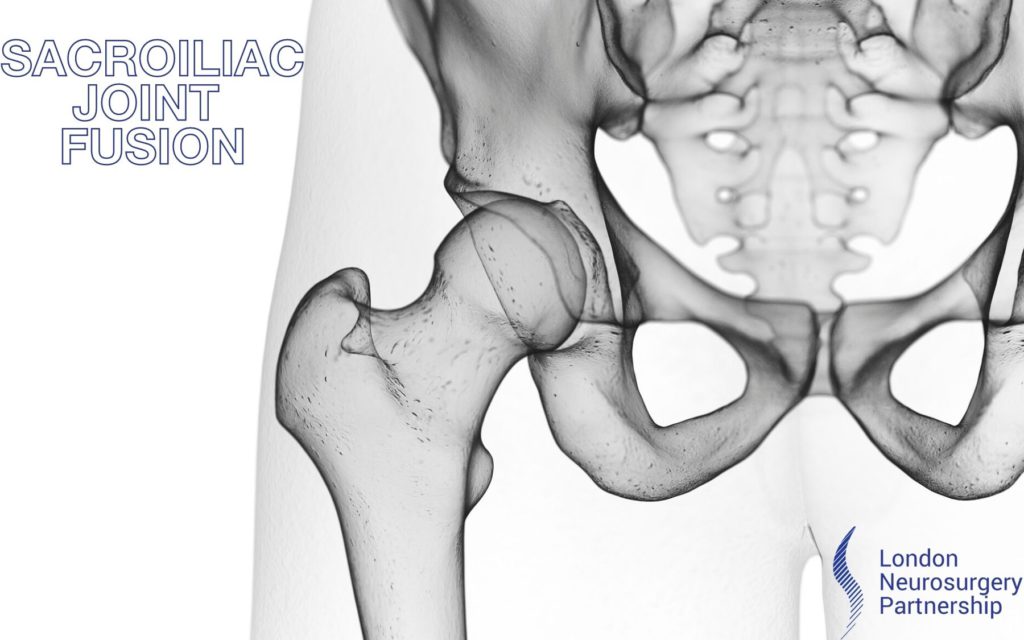
Sacroiliac joint fusion surgery is used to treat sacroiliac joint pain.
What are sacroiliac joints?
You have two sacroiliac bones in the lower part of your spine, one on the left and one on the right. They are located directly below your lumbar spine and connect to your pelvis. The sacroiliac joints do not need to move like the other parts of your spine as their job is to support and provide stability to the weight of your upper body.
What causes the pain?
Your sacroiliac joints are covered in a protective layer called cartilage and when this wears down, usually caused by ageing, it can cause the bones to rub on each other which can cause degenerative arthritis.
Sacroiliac joint pain develops when certain ligaments begin to tighten or even loosen. Some common causes are pregnancy, childbirth, injury and pain can be caused after certain surgical procedures.
The pain is usually one-sided and will possibly worsen over time, especially when climbing the stairs, walking or standing for long periods and even when sleeping and sitting.
How do we diagnose?
During a consultation, a full medical history will be taken as well as a physical examination which will entail testing your reflexes and applying pressure to your joints to find a pain source.
An MRI scan, CT or X-ray will be performed to view detailed images of the sacroiliac joints and surrounding bones, this will ultimately confirm the diagnosis of sacroiliac joint dysfunction.
What other treatments are available to treat sacroiliac joint pain?
It is always best to start with non-surgical treatment like physical therapy and stretching. Some anti-inflammatory medications may also be able to help such as ibuprofen, naproxen, creams, patches and salves
Steroid injections are a good way to target pain without surgical intervention. They can reduce the swelling and inflammation but they are only temporary and may need repeating. Nerve blocks are also useful in delivering an electrical current to stop the nerve fibres from sending pain signals to the brain.
The sacroiliac joint fusion surgery
Sacroiliac fusion surgery is a minimally invasive procedure, this means it is performed through a very small incision in on the buttock. The patient is placed in a prone position and given a dose of a general anaesthetic. A small incision is made (no larger than 3 cm) to reach the ilium. A small pin is inserted and passed through the ilium and centred in the sacrum, past the sacroiliac joints. A drill will then be used to create a small pathway for the titanium implants to be inserted. Bone grafting may also take place to stabilise the joint and promote bone growth. The surgeon will clear the cartilage and soft tissues and the bone graft, which is often collected from part of the ilium will be packed into the joint.
The surgery will usually take around an hour and the patient will stay a couple of days in the hospital. There are risks to this procedure such as haemorrhage, bruising and swelling, infection and nerve damage, but the risks are small and your surgeon will run you through them before you have your surgery.
Recovery will require regular activities such as light exercise and looking after the wound site. You will see your consultant in four to six weeks’ time to see how you’re getting on and to be fully discharged.
This article is intended to inform and give insight but not treat, diagnose or replace the advice of a doctor. Always seek medical advice with any questions regarding a medical condition.





0 Comments